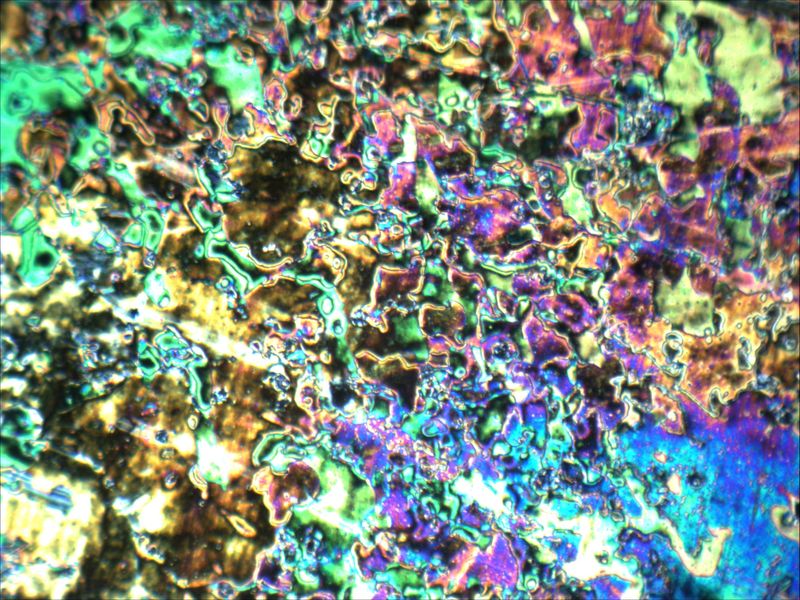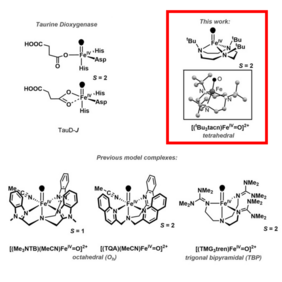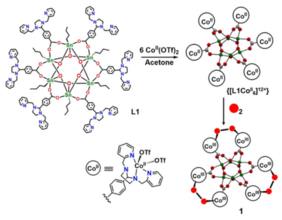The group of UniSysCat researcher Prof. Kallol Ray recently published three papers in Angewandte Chemie Int. Ed., two of which have been highlighted as Hot Papers. The Hot Papers report the characterization of catalytic reaction intermediates using sophisticated spectroscopic methods - results that have been obtained in collaboration with the groups of UniSysCat members Prof. Peter Hildebrandt and Prof. Holger Dau and and also involve an EC2/BIG-NSE scholarship holder, Katrin Warm. All three articles are open access.
The first Hot Paper describes the search for the three-dimensional structure of a reaction intermediate in a certain biocatalytic process, namely the cycle of non-heme iron oxygenases. It provides new insights into the structure of the reactive oxoiron(IV) intermediate that is formed upon dioxygen activation by the enzyme taurine dioxygenase (TauD). The structure found here by spectroscopy and calculations is one of the best structural, electronic and functional models for the reaction intermediate formed in the natural enzyme-catalyzed cycle. The full article is found in Angew. Chem. Int. Ed. 2021, 60, 6752–6756
The second Hot Paper characterizes copper-oxygen species that act as reaction intermediates in the aerobic alcohol oxidation. Copper-oxygen species are proposed as reactive intermediates in a variety of biological and chemical oxidation reactions. For developing new, selective catalytic reagents, their electronic structures and reactivities need to be understood. The spectroscopic study by Ray et al. reveals how a thermodynamically stable bis(m-hydroxo) dicopper(II) species can be activated by tuning the distance between the two copper centers. The findings constitute an important step towards a detailed understanding of transition-metal catalysts involving redox-active organic cocatalysts. The full article is found here: https://doi.org/10.1002/anie.202108442
A third publication is not only appreciable for its science - UniSysCat is also proud that it involves the previous BIG-NSE student Inés Monte-Pérez. The study sheds light on a specific biocatalytic process: O2 activation by binuclear non-heme metalloenzymes. More precisely, a specific binuclear reaction intermediate of a metalloenzyme has been investigated. The recent study reveals that it can be activated for electrophilic hydrogen atom abstraction and oxygen atom transfer reactions by tuning the distance between the metal centers. The finding is surprising since such binuclear metal-peroxo intermediates are typically known for their nucleophilic reactivity. The observed electrophilic chemistry represents a new domain for metal−peroxide reactivity. The full article has been published in Angew. Chem. Int. Ed. 2021, 60, 14954–14959.





